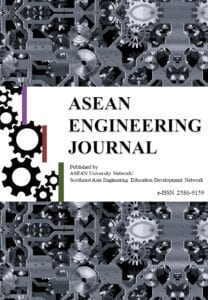KEY SECTORS PERSPECTIVE IN SELECTING OPTIMAL BIOLOGICAL NUTRIENT REMOVAL TECHNOLOGIES FOR SEWAGE TREATMENT IN THE PHILIPPINES
DOI:
https://doi.org/10.11113/aej.v11.16673Keywords:
Biological nutrient removal, Fuzzy analytic hierarchy process, Grey relational analysis, Multi-criteria decision analysis, Sewage treatmentAbstract
The current effluent standards emphasize on the removal of nutrients from sewage, and one solution is for establishments to install biological nutrient removal (BNR) technologies. However, there are several factors to be considered in installing or upgrading the technologies. Hence, the study utilizes two multi-criteria decision analysis (MCDA) tools to determine the important attributes and the optimal technology from the perspective of the academe, regulatory agency, and industry. Calibrated fuzzy analytical hierarchy process (FAHP) calculates the relative importance of the three criteria (implementability, financial, and socio-environmental) and twelve sub-criteria. On the other hand, the grey relational analysis is used to calculate the performance of the four selected alternatives: 3-stage Bardenpho (A2O), 5-stage Bardenpho (5BP), sequencing batch reactor (SBR), and membrane bioreactor (MBR). Combining the results of calibrated FAHP and GRA provided the overall ranking of alternatives. Results showed that each sector prioritized different factors in the selection of the optimal BNR technology. The academe considers socio-environmental (0.43) as the most preferred criterion, while the regulatory agency and industry consider financial (0.36) and implementability (0.57), respectively. Overall, the three sectors agreed that the sequential batch reactor (SBR) is the optimal BNR technology (GRG = 0.69 - 0.79).
















